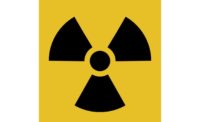For decades, asbestos was considered an ideal substance to use in a variety of industrial materials and equipment due to its remarkable heat and fire resistance properties, paired with incredible durability, poor electrical conductivity, and high tensile strength. Because of these properties, and because it was available in large quantities and inexpensive to produce, asbestos fibers were often combined with other materials for use in thousands of industrial, maritime, automotive, and building products. Asbestos is still used today in a limited number of industrial settings, such as for filtering chemicals, and is included in some vehicle brakes and roofing products.
Before the U.S. Environmental Protection Agency began regulating asbestos, it was believed that asbestos-related diseases occur only in people who worked closely with the mineral. In fact, exposure to asbestos can occur just about anywhere and in anyone from factories that produced asbestos-containing products and released asbestos fibers into the air polluting nearby neighborhoods, to those who worked with asbestos and brought the mineral home on their clothes and tools, thus exposing their families.
Industries known to carry a high risk of asbestos exposure
Even today asbestos is still the principal toxic danger to workers, causing the majority of occupational cancer worldwide. An estimated 125 million people continue to be exposed to asbestos in the workplace annually and more than 107,000 workers die each year from an asbestos- related disease, .
The following industries and job sites present the highest rates of risk when it comes to being in contact with asbestos:
- Manufacturing
- Shipbuilding and repair
- Power generation
- Chemical industry
- Firefighting
- Asphalt
- Construction
- Coal mine
Occupations associated with heavy asbestos exposure include jobs in the asbestos mining and milling, manufacture of asbestos textile, shipbuilding trade, construction and building trades, workers at fiber cement plants, painters, carriers of asbestos materials, and a variety of other trades.
The hazards of asbestos
Asbestos remains the most important occupational lung carcinogen, where 5-7 percent of all lung cancers can be attributed to occupational exposure to asbestos. People working with asbestos or asbestos-containing products without proper protection are likely to be exposed to much higher levels of asbestos fibers in the air, and consequently a very high risk of developing several cancers and severe pulmonary diseases. It isn’t the chemical properties that make asbestos hazardous, but the structure of the particles that are inhaled. These fibers have the lethal characteristic of splitting into microscopically small particles (diameter smaller than 0.1 micrometers) and pass through the filtering system of the airways directly into the pulmonary tissues where inflammation and scarring will ultimately affect the lungs extensively. Epidemiological and clinical studies have proven that lung diseases such as mesothelioma, lung cancer, asbestosis, pulmonary fibrosis, pleural plaques, and diffuse pleural thickening are caused by asbestos, although scientists assume considerably more organs are also affected, resulting in cancer of the stomach, bowels, bladder, ovaries, and larynx. Because the harm to health becomes evident only decades later, thousands of people continue to be diagnosed with asbestos-related diseases each year.
If you have been exposed to asbestos at any point in your life, you should consult an asbestos-related disease specialist right away. Advances in medicine have allowed doctors to treat an asbestos-related illness with better outcomes, especially if the disease is caught in its early stages.
Protecting workers
Companies are required to protect workers by establishing controlling work practices and creating engineering controls to reduce airborne levels of the toxic mineral. Among the best practices to prevent or minimize asbestos risks in the workplace, we mention the following:
- Containment of asbestos operations
- Providing workers with specific instructions that address hazards, work and hygiene practices, and necessary controls
- Constant controlling and monitoring the concentration of airborne asbestos fibers
- Using and maintaining appropriate personal protective equipment, clothing, and respirators
- Decontamination of workers' clothes in order to avoid take-home asbestos exposure (showers and other post-exposure precautions)
- Safe removal and disposal of any asbestos waste
- Regular medical examination for certain workers who are exposed to high levels of asbestos.
In recent years, due to the exposed health and environmental risk associated with asbestos, new technologies have been developed in the search for alternative materials. These new methods include polyurethane foams, flour fillers, cellulose fibers, and thermoset plastic flour, which pose a relatively low hazard to human health.


